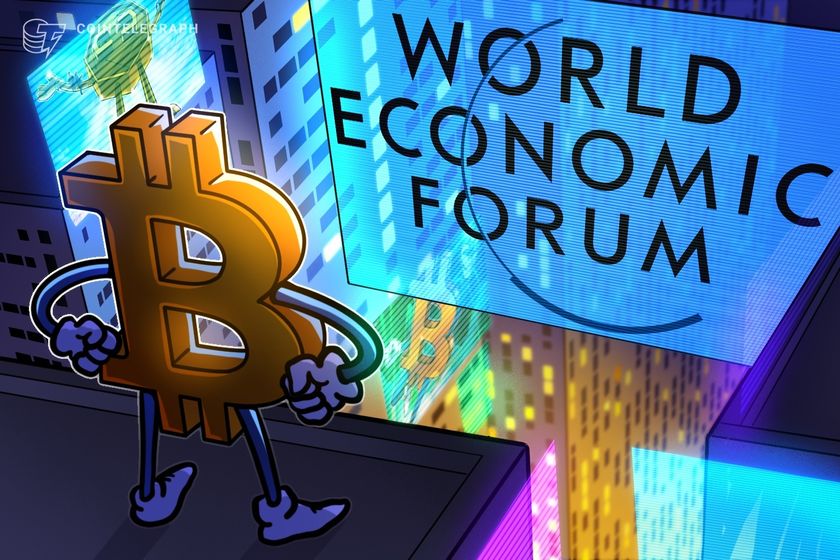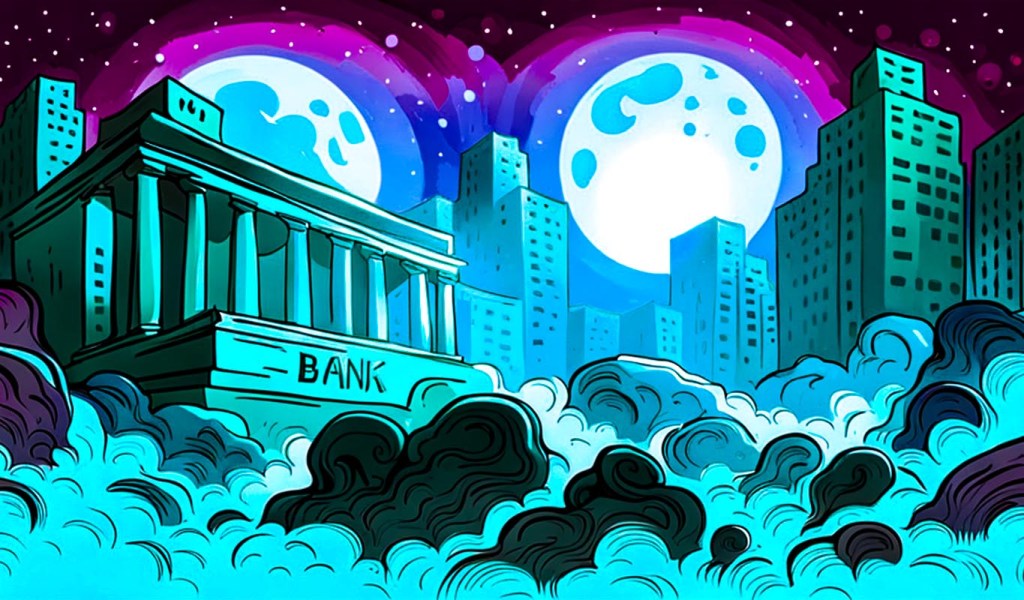
The failure of First Republic Bank marks a volatile beginning to a busy macroeconomic week, while Bitcoin already faces downside pressure.
Bitcoin (BTC) starts a new week digesting major macroeconomic news as the United States sees the second-largest bank failure in its history.
After a sideways weekend, BTC/USD was already volatile into the new weekly and monthly candle as the downside kicked in.
After steadying below $29,000, BTC price action is already facing more potential pressure, with First Republic Bank being placed in public receivership and taken over by JPMorgan Chase.
The move, announced during Asia trading but before the Wall Street open, precedes an already heavy week in which the Federal Reserve will reveal its next interest rate shift.
With much to take in, the potential for continued surprises in crypto markets is clearly evident.
Cointelegraph looks at these risks and more in the weekly rundown of crypto — specifically Bitcoin — price triggers.
BTC price volatility upends flat monthly close
Classic flash volatility accompanied Bitcoin’s segue into a new weekly and monthly candle after April finished sideways.

After closing out the month at $29,300, BTC/USD swiftly dived lower as bid liquidity was pulled from the Binance order book.
This was responsible for delivering the local overnight lows of $28,289 on Bitstamp, according to monitoring resource Material Indicators, as tracked by data from Cointelegraph Markets Pro and TradingView.
#FireCharts 2.0 (beta) shows that when $29,150 was getting filled the bid ladder below was pulled and moved lower. #BTC price action sliced through the freshly open hole of illiquidity like a hot knife through butter.
— Material Indicators (@MI_Algos) May 1, 2023
Seeing these moves play out in near realtime is a great way… pic.twitter.com/CnvRLRNcwc
Bitcoin thus reached “bounce” targets for some, including Michaël van de Poppe, founder and CEO of trading firm Eight, who noted potential strength on altcoin markets returning.
“Bitcoin didn't hold $29,200 after multiple tests. Reached $28,300 for a bounce play. Good part; Altcoins are bouncing more firmly,” he summarized on the day.
The day prior, Van de Poppe had warned that without a reclaim of $30,000, Bitcoin would not be able to continue its uptrend, while correctly predicting the eventual reversal level.
Standard chop on #Bitcoin in the weekend.
— Michaël van de Poppe (@CryptoMichNL) April 30, 2023
No breakout above $30K = no trigger for continuation.
Holding above $29.2K, and still facing a potential correction to $28.3K as the ideal trigger for new longs. pic.twitter.com/3GJY8wImR9
Popular trader Crypto Tony meanwhile confirmed that he was waiting for $28,300 support to prove itself before taking a position.
$BTC / $USD - Update
— Crypto Tony (@CryptoTony__) May 1, 2023
Still not in a position yet, but looking here at the current support level we are on around $28,300. If we can maintain this level and hold, well this would be an entry for me on a long scalp
Will need to see a few 4 hour candles to demonstrate demand pic.twitter.com/zCKnl1vxw3
The same level was also important for other traders, including Ninja, while Sun Tzu agreed that without a clear break into the $30,000 zone, the odds for extended downside remain.
“We are still ranging within this important resistance zone,” he told Twitter followers on May 1.
“As always, never assume a resistance is going to be broken until it happens, as the risk reward ratio for longs are quite low. The plan still remains the same, unless we break $31,000.”
Still long bias for a bounce, added on the stop hunt.
— Ninja (@Ninjascalp) May 1, 2023
If we start closing below $28.3k, I will cut and long somewhere sub $28k for a bounce
above $28.6k & bulls should be good for higher, if we keep stalling there... not good & likely cutting$BTC https://t.co/QFJzLzqveT pic.twitter.com/TYS7eGKxAF
JPMorgan takes over First Republic Bank in 2nd biggest U.S. bank failure
In strong contrast to last week, macroeconomic events will take center stage in the coming days as the Federal Reserve meets to decide on interest rate changes.
Despite being heavily priced in by markets, the forthcoming 0.25% hike, to be announced at the May 3 meeting of the Federal Open Market Committee (FOMC), is still not guaranteed.
The picture remains complex. The Fed is hiking into increasing signs of an inbound recession, while a more pressing danger comes in the form of the lingering banking crisis from March.
As of May 1, First Republic Bank (FRC), shares of which plunged 75% in April alone, is being placed under public receivership by the U.S. Federal Deposit Insurance Corporation (FDIC). Lenders including PNC Financial Services Group, JPMorgan Chase & Co. and Citizens Financial Group Inc. were among the banks bidding for FRC, with JPMorgan ultimately taking over.
Reports previously indicated that the deal should have been completed and announced before the start of Asia trading, but this took longer, being announced at approximately 8am UTC.
First Republic seized by California regulator, JPMorgan to assume all deposits. First Republic is 2nd largest Bank Failure in US history. FDIC estimates a $13bn loss to deposit insurance fund. First Republic's 84 offices to reopen on Mon as JPMorgan Chase. https://t.co/QBKxbAj76M pic.twitter.com/zqlPRFcGUg
— Holger Zschaepitz (@Schuldensuehner) May 1, 2023
As a sense of expectation hangs in the air, attention is focusing on the Fed, which risks unsettling the banking sector even more with a further rate hike under current circumstances.
As Arthur Hayes, former CEO of crypto trading giant BitMEX, warned late last month, the U.S. may be caught between a rock and a hard place.
“Look for the Fed to fix that issue by backstopping a larger slice of US bank balance sheets. Money printer go brrr,” part of Twitter activity read on April 29, with Hayes repeating a now-familiar $1 million long-term BTC price target.
Bets on the Fed following through with the expected raise increased on the FRC news, markets seeing an 90% chance of 0.25%, according to data from CME Group’s FedWatch Tool.

For Bitcoin traders, meanwhile, the FOMC event in itself marks a potential price turning point.
“Seems like Bitcoin once again became stablecoin, this time around 29200$. Obviously due to the weekend but I think it's gonna stay relatively stable this way until Wednesday,” popular trader Jackis predicted prior to the monthly close.
“On Wednesday we have the FOMC meeting, highly anticipated event which is gonna be the perfect impulse.”
FOMC days tend to spark volatility across crypto markets, albeit often brief and characteristic of a “fakeout” as bid and ask liquidity is taken before prices return to prior levels.
April still beats February Bitcoin price performance
Despite current cold feet over BTC price strength, April managed to avoid receiving the title of worst month of 2023.
Data from monitoring resource Coinglass shows overall returns for BTC/USD totaled 2.8%.

These beat February, which returned no considerable gains at all, while preserving Bitcoin’s “green” record for the year so far.
On weekly timeframes, however, the picture looks less appetizing, with consolidatory weekly candles underscoring the stubborn nature of $30,000 resistance.

Some remained optimistic, with popular Twitter account Mickybull Crypto dismissing weekend price action as a standard chart feature.
“This price action happens most weekends. Note: one key to proper T.A is being able to identify what happened, what's happening and what is likely to happen,” part of a tweet read on May 1.
“Meanwhile BTC weekly and monthly candle close is bullish.”

On-chain transactions challenge records
Under the hood, on-chain activity tells a compelling story of Bitcoin growth during its 2023 comeback.
Recorded by on-chain analytics firm Glassnode among others, the daily transaction count for Bitcoin is approaching all-time highs after this year saw an “explosive” increase.

In a Twitter thread investigating the overall strength of the BTC price uptrend, Glassnode acknowledged that on-chain volume had yet to match it.
“Bitcoin transaction counts, address activity, Inscriptions, and Mempool congestion are all elevated. As is the degree of HODLing, and supply acquired below $30k,” it commented.
“Conviction remains. However, the uptrend remains young, and on-chain volumes have not picked up in support...yet.”
An accompanying chart showed unspent realized price distributed of various market cohorts.

Continuing, Glassnode lead on-chain analyst Checkmate remained upbeat on Bitcoin continuing its rally and the late-2022 lows marking a local bottom.
“Best Estimate --> Uptrend justified, and floor most likely in,” he wrote, summarizing the latest research.
“But new capital inflows are limited, and remain dominated by the existing holder base. Thus, expect a choppy road, where traders have growing influence on low timeframes and liquidity. Probably a macro hated disbelief rally, which also carries out plenty of lettuce handed bulls along the way.”
Crypto market greed flipflops near multi-year highs
While price has been wavering, crypto market sentiment has been creeping higher after a drop in late April.
Related: Bitcoin price can ‘easily’ hit $20K in next 4 months — Philip Swift
The latest readings from the Crypto Fear & Greed Index show that market “greed” is trending back toward levels last seen at Bitcoin’s $69,000 all-time highs in November 2021.
A lagging indicator, Fear & Greed nonetheless shows the ease with which sentiment is currently being influenced by comparatively small market shifts.
This in turn reiterates the importance of current resistance levels for Bitcoin and Ethereum in particular, with both assets facing key lines in the sand — $30,000 and $2,000, respectively.

Magazine: Whatever happened to EOS? Community shoots for unlikely comeback
This article does not contain investment advice or recommendations. Every investment and trading move involves risk, and readers should conduct their own research when making a decision.










